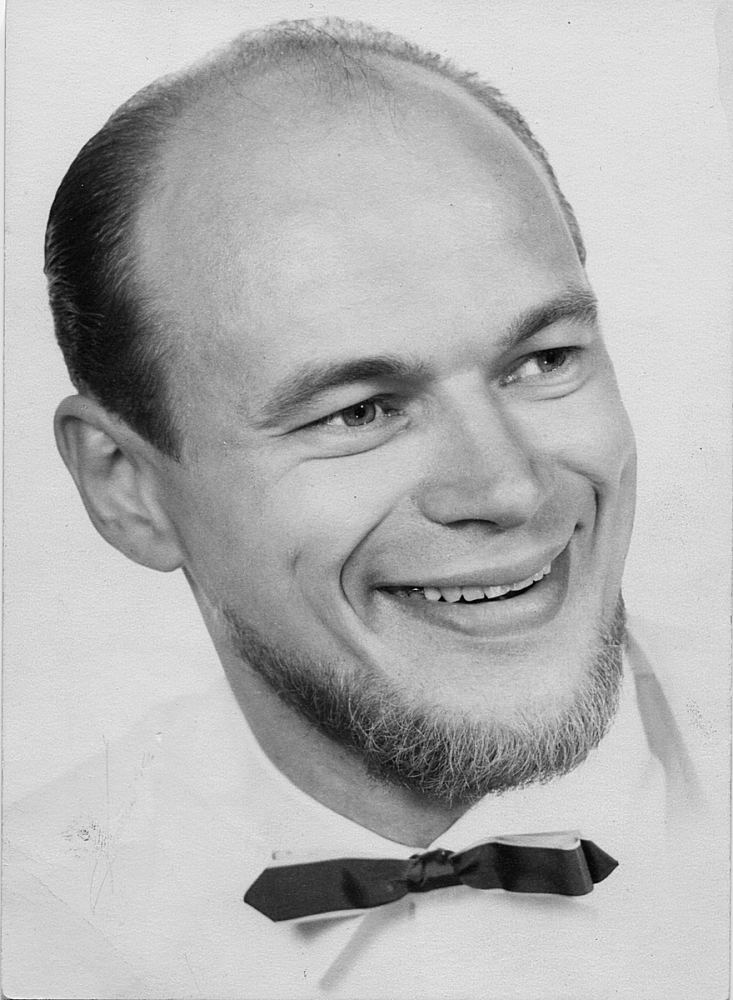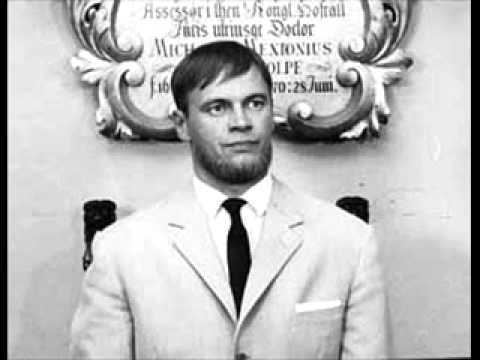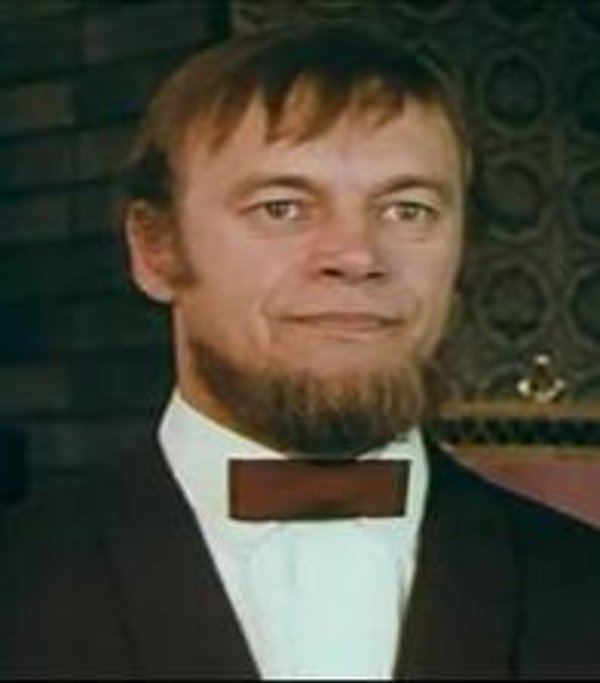Name Spede Pasanen Role Film director | Children Pirre Pasanen Albums Naisen logiikka | |
 | ||
Full Name Pertti Olavi Pasanen Occupation film director and producer, comedian, inventor Spouse Pirjo Pasanen (m. 1965–1981) Movies and TV shows Speden Spelit, Uuno Turhapuro armeijan l, Little Boys, Uuno Turhapuro muuttaa, Uuno Turhapuro – Suome Similar People | ||
Spede Pasanen elokuvia
Pertti Olavi "Spede" Pasanen (10 April 1930 – 7 September 2001) was a Finnish film director and producer, comedian, humorist, inventor, TV personality and practitioner of gags.
Contents
- Spede Pasanen elokuvia
- Spede Pasanen Tom Dooley
- Radio career
- Film career
- TV career
- Influences and comedy
- Other achievements
- Personal life
- Actor
- Television series
- Yle
- Named after Spede Pasanen
- References

During his career he directed, wrote, produced or acted in about 50 movies and participated in numerous TV productions, including the comedy Spede Show and the game-show Speden Spelit. Much of his more commercial work was in collaboration with Vesa-Matti Loiri (whose most popular character created by Pasanen was Uuno Turhapuro; first in TV sketches and then in a long-lasting series of motion pictures) and Simo Salminen. Pasanen's films and TV shows, often made fast and inexpensively in a conveyor-belt mode, usually didn't gain much recognition from the critics but were extremely popular among Finnish audiences from the 1960s onwards.

He was the owner of his own film production company, Filmituotanto Spede Pasanen Ky. He is noted as the main influence of many who make an attempt to break into the Finnish comedy scene. Spede also had a long, strained relationship with Suomen elokuvasäätiö, a government-financed film-funding organisation which continuously refused to fund his movies.

Spede Pasanen: Tom Dooley
Radio career

During the late 1950s and early 1960s Spede was a noted presence as a radio comedian. He applied to work at Yleisradio twice in 1956 and again in 1959 as an entertainment provider (ajanvietetoimittaja) and was hired on his second try. Spede's most popular program was Ruljanssiriihi which combined sketch-comedy and musical performances. The program eventually developed into the program Hupiklubi. Spede and actor Leo Jokela also created the break-out character G. Pula-Aho (voiced by Jokela), a smart-talking, Helsinki slang using parrot who would insult Spede on Ruljanssiriihi.

Spede's other programs included Tervahöyry Hyrskynmyrskyn suvisilla laineilla, Hyvää iltaa – tulkaa mukaan and Kesäterässä.
Film career
After playing several supporting roles throughout the 1950s Spede made his first starring appearance in 1964's X-Paroni which he wrote and co-directed with his on-screen co-star Jaakko Pakkasvirta. The movie's success led to the creation of Milli Pilleri which also introduced moviegoers to Simo Salminen who became a fixture of Spede's acting troupe, often playing the side-kick to Spede's own characters. It was also the first movie Spede co-directed with Jukka Virtanen and Ere Kokkonen who would alternate directing Spede's future motion pictures, while Spede focused more on writing and producing. Spede had to finance most of his films during this period due to his poor relations with the Finnish Film Foundation.

1967's period-comedy Noin Seitsemän Veljestä was a parody of Robin Hood which Spede had worked on since the 1950s and introduced Vesa-Matti Loiri as an adult actor (having made his on-screen debut years earlier as a child actor in Pojat). The success of these movies led to Spede producing and releasing three movies in 1969, Näköradiomiehen ihmeelliset siekailut, Leikkikalugangsteri as well as his first colour feature Pohjan Tähteet. Näköradiomies performed well despite being a more serious movie but it and Pohjan Tähteet underperformed in comparison to the more typically comical Leikkikalugangsteri. Despite Pohjantähteet winning a shared Jussi Award for Kari Sohlberg in the category of best cinematography (with Spede's own Leikkikalugangsteri and Jörn Donner's Sixtynine 69), Pasanen did not produce another colour feature until the late 1970s.
Spede continued to experience success with 1970s Speedy Gonzales – noin 7 veljeksen poika and the tragic comedy Jussi Pussi. Speedy Gonzales performed well, despite Vesa-Matti Loiri being absent due to a leg injury just prior to shooting (he instead received a writing credit). In 1971, Spede released three motion-pictures, Kahdekses Veljes (his debut as a solo director) and Hirttämättömät (the sequel to Speedy Gonzales) both starring himself as well as Saatanan Radikaalit, which was co-directed by its four starring actors Paavo Piironen, Heikki Nousiainen, Timo Nissi and Heikki Huopainen. Spede only produced this movie which was intended to give its four stars a chance to complete a motion-picture on their own. All three movies under-performed though which led to Spede taking a two-year hiatus from film-making during which he focused exclusively on his TV work. Regardless, Spede won the 1971 Producers' Jussi Award for all three movies.
In 1973, Spede released the first Uuno Turhapuro movie based on the popular skit-character by the same name. To save costs, Spede filmed and edited the movie entirely on video and had it transferred to film for theatrical distribution. Uuno became a hit and a further four Uuno films were finished during the 1970s. Spede resumed filming small budget comedies with 1974's Viu-Hah-Hah-Taja, directed by Ere Kokkonen and mostly starring Spede's TV actors. Spede only appeared in a cameo and went uncredited as the film's writer. In 1979, he released Koeputkiaikuinen ja Simon enkelit, his first colour feature since Pohjantähteet. The movie was a surprise hit and led to a sequel Tup Akka Lakko being released the following year.
In the 1980s, the Uuno series peaked in popularity with 1984's Uuno Turhapuro armeijan leivissä breaking the record of the most popular Finnish domestic film. Spede cranked out movies on an annual basis, using his stock actors and frequently utilizing the popular skit characters for movies such as Kliffaa Hei, Pikkupojat, Fakta Homma and Onks Viljoo Näkyny. The last of these skit-comedy films is considered to be 1990's Rampe & Naukkis, which was lampooned on the popular characters created by Pirkka-Pekka Petelius and Aake Kalliala for the TV show Pulttibois.
During the 1990s, Spede focused almost exclusively on producing rather than writing or directing films with TV work taking more and more of his time.
TV career
Starting from 1964, Spede began making live 15-minute sketch programming for Yleisradio. The show which alternated between the titles Spedevisio, Speden Saluuna as well as Spede Show established many of the tropes and core actors whom Spede would also use in his films. Most of the early skit work is now lost due to live broadcasts not being routinely recorded. Spede appeared on TV continuously until 1976 when he started to focus primarily on film work.
Starting from 1981, Spede once again put priority on TV work. First airing surviving black and white skits on the recently established independent Mainos-TV channel, Spede, Simo Salminen and Vesa-Matti Loiri began producing new skits. Hannele Lauri also joined as a regular cast-member. The new Spede Show continued to air until 1987 when Spede and Loiri had a mock-feud which led to the launch of Vesa-Matti Loiri's own TV sketch show, Vesku Show. Throughout the 1980s, Spede also produced other programs such as the comedy program Fakta Homma and the competition show Kymppitonni with host Riitta Väisänen.
By the 1990s, Spede was himself tired of sketch-work but produced Aake Kalliala's and Pirkka-Pekka Petelius's Pulttibois and Tsa Tsa Tsaa as well as the sporty competition show Speden Spelit. Pasanen also produced more drama-programming such as Hynttyyt Yhteen, Blondi Tuli Taloon and Ihmeiden tekijät (as well as its follow-up Parhaat Vuodet). Many of these shows became stables of MTV3 with many of them airing for several seasons. Spede also approved the production of the dramedy-series Kuumia Aaltoja which aired in 2003 (two years after his death).
Influences and comedy
Spede Pasanen named Bob Hope as one of his biggest comedy influences.
Spede Pasanen is considered emblematic of Savonian ironic humor varying between the fullest extremes of understatement and hyperbole. As he himself explained: "A Savonian never tells a thing exactly like it is." Spede's comedy denounced elitism and he explicitly sought to write and perform comedy for the largest possible audience. His early films in particular, featured elements uncommon to Finnish cinema such as fist-fights, car chases, other elaborate stunt-work as well as unconventional special effects. Many of his movies also featured unconventional settings (such as the medieval period or the wild west), though his later films focused almost entirely on poking fun at Finnish stereotypes.
His Uuno Turhapuro movies can be considered conventional farces. An unemployed slacker will, with comically incredible luck, a father-in-law who is rich and connected but unlucky (mainly due to Uuno), and with slick charm, end up in roles of minister, general officer, or rich man, usually causing havoc in the father-in-law's businesses.
Other achievements
Pasanen was also an inventor and jack-of-all-trades; he had over 50 patents registered to his name, and many of his films include Rube Goldberg-style gadgets. Besides gadgets involved with industrial production, his inventions include:
For a period of time Pasanen was also obsessed with inventing a perpetual motion device. His crude drawings of it also appeared in his sketchs shows and films. Once he became convinced that perpetual motion is theoretically impossible, he openly ridiculed himself in the character of Härski Hartikainen in one of the Uuno Turhapuro movies.
Personal life
Spede married Pirjo Vainimäki, the leading lady of his first starring picture X-Paroni, in 1965. Spede's first and only child, Pirre Pasanen, was born later that year. The couple separated in the early 1980s and divorced later.
A family private individual, Pasanen did not discuss his personal relationships in public. He had a long relationship with the 1976 Miss Europe, Riitta Väisänen. Pasanen valued loyalty and friendship, and even after separation, kept employing and financially supporting previous companions. During and after relationships, he vouchsafed confidentiality and privacy for all involved in his private life. His good relations with the media might have helped with this.
Pasanen's nickname "Spede" came from an earlier nickname "Speedy", referring to his prowess as an ice hockey player during his childhood.
Actor
In the Uuno Turhapuro series, Pasanen played the role of Härski-Hartikainen, a car repairman with a cunning and ribald character, who often participated in Uuno's farcical adventures. His sidekick was Sörsselssön – earlier known as Lörssön (played by Simo Salminen).
Television series
Spede is considered the father of modern Finnish television sketch-humour. Starting his career on Yleisradio he later jumped camps to the competing MTV3 network. However, his work on both has been extremely popular. Apart from starring in these series he was also the main producer for many of the popular shows on MTV3, such as the game-show Kymppitonni and the cult-hit show Pulttibois.
